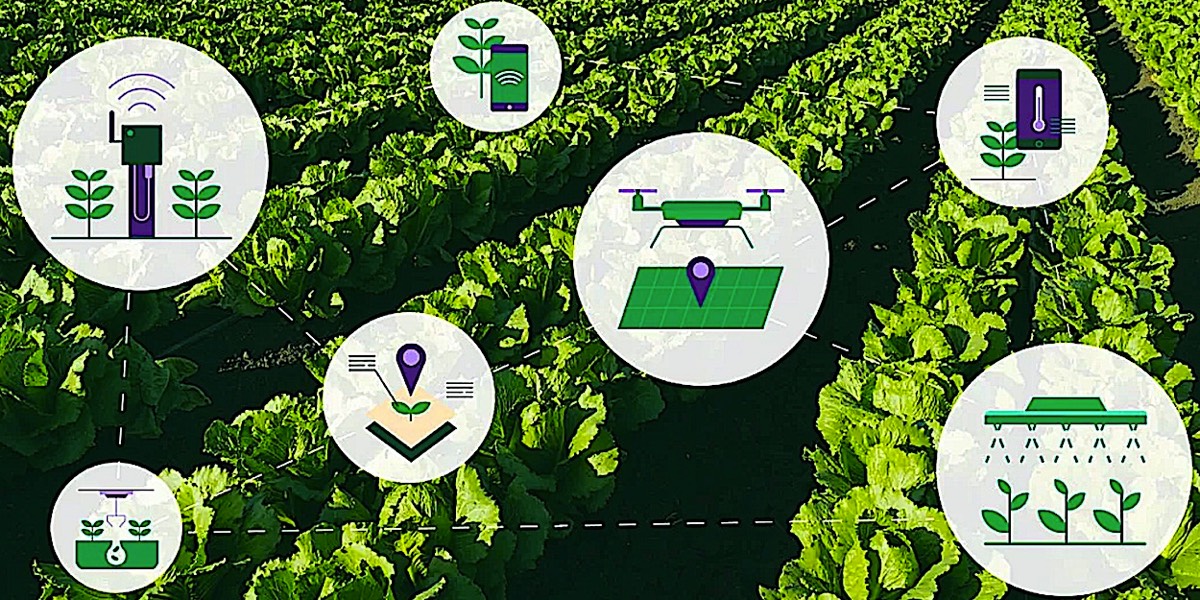
To feed the growing global population, estimates suggest we’ll have to increase food production by as much as 68 percent by 2050. And that’s not the only challenge; there’s also the fact that the middle-class population is growing, which generally brings with it increased demand for meat over grains, legumes, and wheat. Satisfying this demand for more food – and, most likely, more meat – presents a huge challenge for our already struggling planet.
Forbes

Trend 1: Reimagining Farming Methods

Embracing new farming methods could help the agriculture industry reduce its environmental impact while still increasing productivity. While previous evolutions in farming have largely been driven by mechanical improvements (namely, bigger, better machinery) or genetic advances (better seed, more effective fertilizers,
iConsultingINT.com
The next big Transformation is being driven by Digital Tools.

We need urgent new innovations in agriculture and food production.
iConsultingINT.com
Automation

including the use of robots, drones, and autonomous tractors to make farming more efficient
iConsultingINT.com
Precision Farming

which involves applying irrigation, fertilizers, and pesticides at variable rates, depending on the needs of crops, rather than uniformly applying them at set times, quantities, and frequencies.
iConsultingINT.com
A good example of precision farming comes from a collaboration between Israeli company Phytech and Swiss agrichemical company Syngenta. Together, they have developed a monitoring system that includes plant growth sensors and soil moisture sensors to help farmers ontinually monitor crop growth and soil health and take action when and where it’s needed.
More Localized, Urban Farming

which involves applying irrigation, fertilizers, and pesticides at variable rates, depending on the needs of crops, rather than uniformly applying them at set times, quantities, and frequencies.
iConsultingINT.com
Vertical Farming

(the practice of growing crops in vertical layers) and hydroponics (growing plants in nutrient-rich water)
iConsultingINT.com
(the practice of growing crops in vertical layers) and hydroponics (growing plants in nutrient-rich water) – are both methods that generally use less water, soil, and space than traditional field farming methods. If this sounds niche, think again; the world’s largest vertical farm, located in Newark, New Jersey, shows that vertical farming can be done on a huge scale and with impressive results. Creators AeroFarm say the vertical farm is 390 times more productive per square foot than a field farm.
Trend 2: Finding New Ways to Create Food
Did you know that one-third of croplands are used to grow feed for livestock rather than humans? It’s an astonishing statistic. If we could only find innovative new ways to create meat, more of that land could be given over to growing crops for humans – something that will surely become more pressing as the global population grows.
Forbes
Plant-Based Meats

it’s clear that the market for meat alternatives is thriving.
iConsultingINT.com
it’s clear that the market for meat alternatives is thriving. Chains like Burger King are routinely stocking plant-based burgers, and plant-based pioneers Beyond Meat became one of the most successful IPOs in history after going public at $1.5 billion and being valued at $13 billion less than three months later. In fact, estimates suggest meat alternatives could account for 10 percent of the global meat industry by 2029.
Cultured (lab-grown) Meat

For those who don’t want to make the switch to plant-based meats, cultured meat – which is genetically the same as real meat but is produced from animal cells.
iConsultingINT.com
For those who don’t want to make the switch to plant-based meats, cultured meat – which is genetically the same as real meat but is produced from animal cells – could prove to be a viable alternative. Real meat without the factory farms and animal slaughter? Sounds pretty good to me. It's early days for cultured meat, but there are signs that the market – and regulators – are coming around to the idea. In 2020, Singapore became the first nation to approve cultured meat for sale.
Potential for 3D Printing

Potential for 3D Printing to play a role in food production.
iConsultingINT.com
Barcelona-based startup NovaMeat is leading the way in 3D printing plant-based food and has already successfully created the world’s first 3D printed piece of “meat” that apparently mimics the fibrous nature of real meat.
Future Pastureland Recovery

If we can simultaneously shorten that (pastureland recovery) period while increasing yields, it will be a big advantage for farmers to achieve sustainable agriculture.
iConsultingINT.com

⭐ Latest Technology

The latest Technology Information about the world's best trends, hardware, apps, and much more. From top companies like Google and Apple to tiny startups.
PALACE-iConsulting.com
Future

The American public anticipates that the coming half-century will be a period of profound scientific change. This is among the main findings of a new national survey by the Pew Research Center and Smithsonian magazine, which asked Americans about a wide range of potential scientific developments—from near-term advances like robotics and bioengineering, to more “futuristic” possibilities like teleportation or space colonization.
PALACE-iConsulting.com
Sustainability

As populations have increased and we have relied on the Earth's natural resources—such as minerals, petroleum, coal, gas, and more—the Earth's biodiversity and creatures, from birds to insects to mammals, have declined in number.
iEarthLife.com
Contact Us & follow us for Earth Life Information

This is our planet! So why we are not protecting it?”
This is where we live, why are we hurting our home. Live on our earth. Love our earth, laugh on our earth this is the only one we have – SAVE IT.
iEarthLife.com

